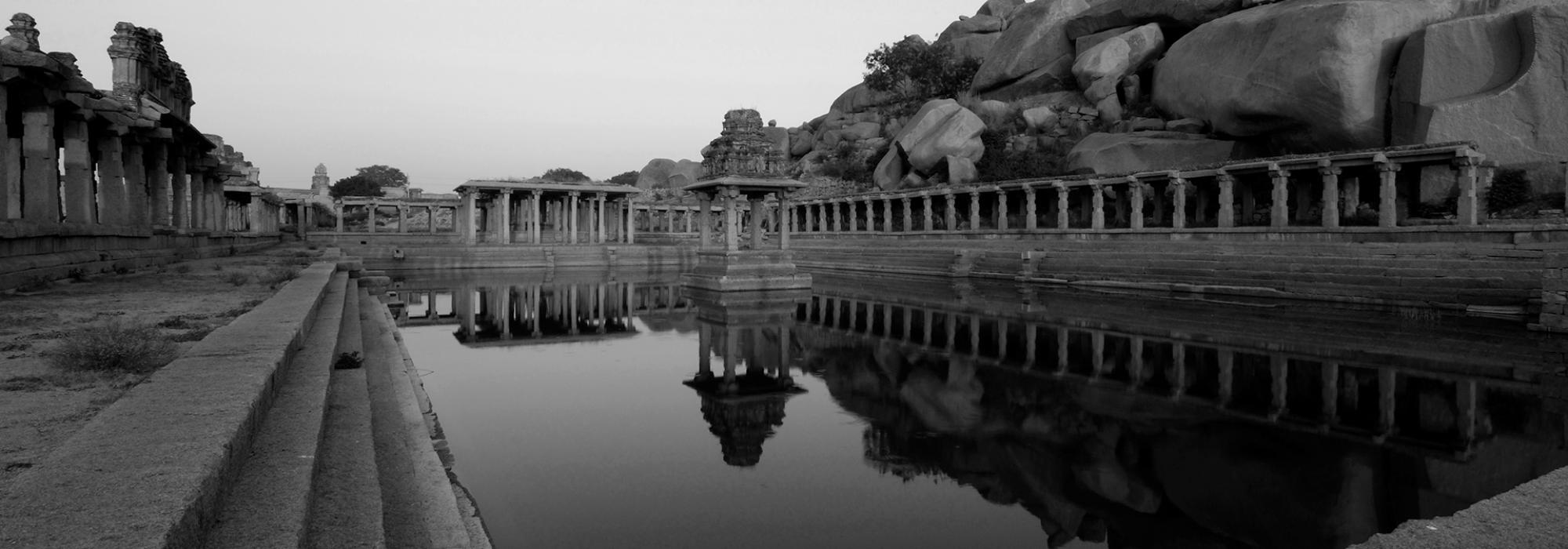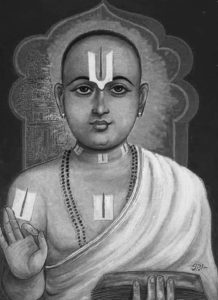Vidyaranya ensured that different religious traditions of the land were given equal respect while not disturbing the peace in the empire. For a great empire to flourish, it needs more than military and political prowess. Only a robust cultural and social foundation can ensure that the people of a country remain united through troubles and turmoil. If a cursory look at today’s world can show us what kind of profound impact religion can have over a country, it is impossible to not see how religion ruled the worldview eight hundred years ago.
Then, as now, religious leaders had considerable impact over their followers, often conflicting with national interests. It wouldn't be incorrect to claim that a country whose religious orders are in harmony can thrive prosperously for a long time. However, for an empire founded over religious motivations such as Vijayanagara, keeping religious harmony amongst various denominations would have been quite a task. It needed a sympathetic understanding of various schools of religion as well as cordial relations with the tradition of each order, while having true knowledge of reality. Vidyaranya was such a uniquely capable personage owing to his realization of the vedantic ideal internally as well as in practice. He was followed in this realization by Sayana.
It is well known that leaders of various faiths such as shaiva, vaishnava, srivaishnava, virashaiva, and jaina united to help founding of the Vijayanagara empire. The leaders of these faiths were predominantly recluses or those steeped in religious practices, not cognizant of practicalities. Their concerns mostly did not extend to all sections of the population and were limited to their own group.
The task of enumerating the ideal of a common good for the entire populace and then achieving it was left to Madhava and Sayana, who were capable of achieving the vision of collective well-being. The brothers were helped in no small extent by their leaning towards advaita, which alone is capable of achieving religious harmony without losing its uniqueness. This has been recognized by historians as well. In short, the behavior of Madhava towards other religions cannot be just described by that much-bandied-about word of today – 'tolerant.' It was more than that; it was a genuine sympathetic understanding.
Shaivism had several branches such as kalamukha, kapalika, siddhanta-shaiva, and virashaiva. The first and last of these were the most influential during the Vijayanagara era. The teachers of the kalamukhas were greatly respected by the Sangama brothers. It is well-known via inscriptions that Kashivilasa-Kriyashakti (guru of Angirasa-Madhava) and his successors, such as Vanivilasa-Kriyashakti and Vidyashankara-Kriyashakti were honored by the kings of the Vijayanagara empire.
The renaissance of the virashaiva faith is another achievement of the Vijayanagara empire. Compilation and editing of various vachana works, composition of several Purana-based poetic works, authoring of theological treatises, and unique works such as Shunya-sampadane marked the splendor of the virashaiva dharma. In fact, the nephew of Madhava-Vidyaranya, Lakkana (or Lakshmana-Dandesha) also contributed significantly to the virashaiva faith.
At that time, the madhva-vaishnava sect was gradually attaining prominence. Madhava, during his negotiations with the chieftains of Tulunadu, the place of origin of this faith, undoubtedly had a sound understanding of the tenets and the adherents of the madhva faith. Moreover, the dvaita doctrine being a rival school to Madhava-Vidyaranya's advaita school, was definitely something that he knew about. Several important followers of Sri Ananda Tirtha had frequented and lived in the area close to Hampi including Padmanabha Tirtha and Narahari Tirtha. Other members of the tradition including Akshobhya Tirtha, Jaya Tirtha, and Vyasa Tirtha were honored by the royalty of the Vijayanagara empire. It is quite possible, thus, that Madhava had friendly relations with the important personages of this tradition, in spite of the rancor between the followers of dvaita and advaita.
The following anecdote shows how Madhava-Vidyaranya respected true scholarship and learning transcending religious and philosophical differences. Madhava visited Jaya Tirtha at his cave in Malkhed and after meeting him was impressed by his scholarship enough to get the latter’s works paraded with respect on an elephant. By that time, Ramanuja's vishishtadvaita school had found a firm footing in Karnataka. Chieftains like Gopanna, who vowed allegiance to the Vijayanagara Empire followed the tenets of this school, which had its main place at Srirangam, which was ravaged by several Islamic raids. This had caused a lot of fear and lack of security in the srivaishnava community.
Legend is replete with stories of the suffering of srivaishnavas who protected the main works of the tradition in the face of several troubles. Pillai Lokacharya and Vedanta Deshika were the main pillars of the tradition in that period. These leaders, though well-versed in religious philosophy, had no clue about political or military machinations. It would be no surprise that, after seeing the tribulations of this sect, Madhava and Sayana resolved to free Tamil Nadu from Islamic oppression.
As seen in the previous episode, the liberation of Srirangam happened in the second wave of expansion after the establishment of the Vijayanagara empire, at the behest of Kampana II who was motivated in this act by Madhava. In fact, in less than fifteen years of its establishment, the Vijayanagara empire was directly responsible for ridding Tamil Nadu of Islamic rule completely. Srirangam was re-established as the center of the tradition. Later, we see that teachers of the srivaishnava tradition even ascended to the position of royal guru (during Krishnadevaraya's rule). Without Madhava-Vidyaranya's support for different religious sects, this ascendancy would not have been possible.
Madhava's sympathy was not just limited to Vedic faiths but also to those the unorthodox 'nastika' faiths, of which Jainism is an important one. For instance, he successfully resolved a conflict between jainas and srivaishnavas in favor of the former when a group belonging to the latter tradition obstructed the celebration of Jain festivals and even tried to kill some Jains. Bachappa-Dandesha and Irugappa-Dandesha were prominent followers of the Jain faith who fought on the side of the Vijayanagara empire.
Madhava further extended his welcome to faiths that originated outside of India – Islam and Christianity. When Bahaman Shah established the Bahamani kingdom, Bukkaraya, in recognition of the former’s liberal religious outlook, sent a valuable gemstone as a gesture of his friendship (at the behest of Madhava). Bahaman Shah in turn reciprocated the goodwill by fixing the gem on top of his royal canopy. Several mosques were built in the kingdom. It is well-known that the Vijayanagara empire also gave refuge to several Christians by supporting the building of churches.
This is an example of how 'minorities' would be treated in a society guided by the principles of sanatana dharma and should be noted by our 'secular' historians. Madhava showed that he was way ahead of his times by his deeds. It was no stretch then that the subjects of Vijayanagara chose to show their affection and respect to the savant that they paraded him in a procession along with Virupaksha himself!
ततो विद्यारण्याभिध-यतिवरे भूसुरगुरौ सामारूढे शिष्यैः सह रथमिमं हर्म्यसद्र्शम् विधायासौ पूजां परमशिव-मूर्त्योः पुनरपि द्विजोऽधस्तात्तत्र – विरूपाक्ष-वसन्तोत्सव-चंपू (अहोबल सूरि)
"Then, (the king) performed the worship of the two forms of the Supreme (referring to Virupaksha and Vidyaranya), accompanied by his disciples on the chariot that was akin to a palatial residence, while the other brahmanas stood below."
(Ahobala Suri's Virupaksha-Vasantotsava-Champu)
To be continued...














































